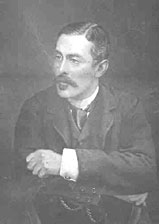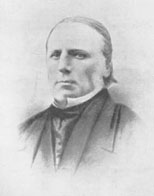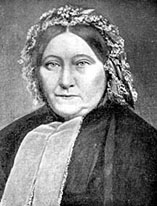Quarry Proprietors
 The slate
industry included two specific types of owners. On one
hand, were the traditional aristocratic families such as the
Pennant and Assheton-Smith families, and on the
other the entrepreneurial adventurers who owned many of the
quarries in the Nantlle and Blaenau Ffestiniog districts. This
division held true until the First World War.
However, syndicates of local men quite often took out leases on
smaller quarries. The slate
industry included two specific types of owners. On one
hand, were the traditional aristocratic families such as the
Pennant and Assheton-Smith families, and on the
other the entrepreneurial adventurers who owned many of the
quarries in the Nantlle and Blaenau Ffestiniog districts. This
division held true until the First World War.
However, syndicates of local men quite often took out leases on
smaller quarries.
John Jones (1796-1857) was one of the most influential
Welsh preachers of his generation. To leaders like John
Elias (1774-1841), he was regarded as a dangerous radical. But
to be true, Elias would regard anybody who dared disagree with
him on the weather forecast for the day as a threat to society.
Interestingly, David Lloyd George held John Jones in so much
adulation, that his portrait hung in Downing Street
when Lloyd George was both Chancellor of the Exchequer and Prime
Minister. Shop keeping was an important occupation for Welsh
preachers in the first half of the nineteenth century. The
wife would run the business, thus enabling the husband to go on
preaching journeys around  the country. Since John Jones’ cousin had married
Griffith Williams, one of the managers of the Talysarn
Quarry, a position was found, or created for him in 1822. The
following year, he married Fanny Edwards, below, a daughter to
Thomas Edwards, overseer at Cloddfa’r Lon Quarry.
Jones, right, consequently left the quarry, and Fanny, in the
true Methodist tradition, opened a shop that sold everything from tincture
of rhubarb to quarry tools. Not only was the shop situated next
door to the chapel, it was also in close proximity to the
quarries. the country. Since John Jones’ cousin had married
Griffith Williams, one of the managers of the Talysarn
Quarry, a position was found, or created for him in 1822. The
following year, he married Fanny Edwards, below, a daughter to
Thomas Edwards, overseer at Cloddfa’r Lon Quarry.
Jones, right, consequently left the quarry, and Fanny, in the
true Methodist tradition, opened a shop that sold everything from tincture
of rhubarb to quarry tools. Not only was the shop situated next
door to the chapel, it was also in close proximity to the
quarries.
The lease on Dorothea appears to have expired in 1848, and
John Jones and some of his associates set up their own company.
But as luck would have it the slate industry slipped into
decline. Wages were cut which made him unpopular with the
workers. The situation further deteriorated, when he was accused
of being unfair and sacking the best quarrymen. His reasoning for doing this was that he felt that his priorit y was to give employment to the poorest
quarrymen regardless of their ability. y was to give employment to the poorest
quarrymen regardless of their ability.
He came close to suffering a fatal accident at the quarry in
1852, and this led him and his partners to terminate their links
with quarrying in 1853. When he died five years later, his body
was placed snugly within three coffins, one of oak, one of
mahogany and one of slate. And as a final tribute a huge memorial
was placed over him at Llanllyfni Churchyard. His eldest son,
John Lloyd Jones (1826-93), from Plas y Bryn, Bontnewydd
became one of the chief managers of Dorothea and Penyrorsedd
Quarries. Fanny Jones died in 1877. Neither should it be
forgotten that John Jones, below, was grandfather
to George M.Ll. Davies (1880-1949), the famous
pacifist.
Politically, there was the Tory interest vested in the
Penrhyn family and the Liberal interest in Samuel
Holland.
However, it cannot be denied that the most powerful men in the
industry were the Pennants of Penrhyn and the Assheton Smiths of
Faenol. These paramount interests were crucial to the whole
industry and by their pricing policies controlled not only the
slate market in general, but also to a considerable degree the
fortunes of smaller quarries.
Other, more modest, quarrying landowners, involved in the
industry were the Newboroughs of Glynllifon, the Oakeleys of
Tanybwlch, the Price family of Rhiwlas and the Williams-Bulkeley
family of Baron Hill.
|